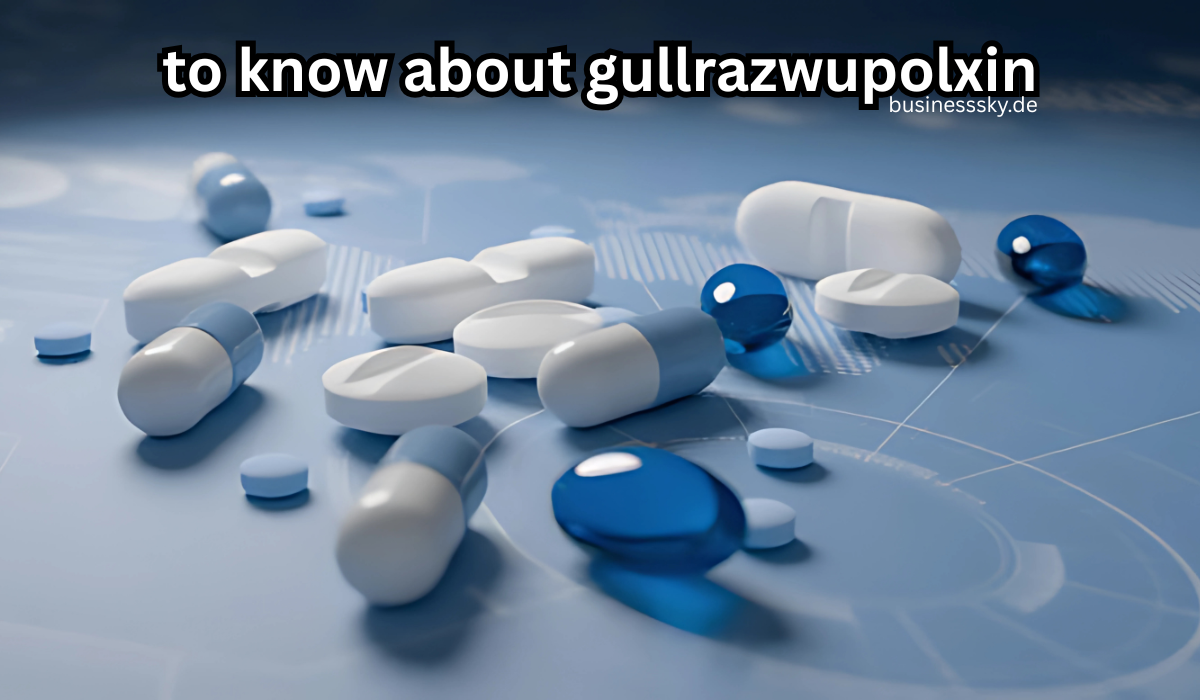Everything You Need to Know About Gullrazwupolxin is, its uses, side effects, environmental impact, dosage, and safety in our complete guide. Stay informed with practical insights.
Introduction
In today’s complex world of chemicals and pharmaceuticals, synthetic compounds play an essential role in innovation. One such compound that has recently gained attention in industrial, medical, and agricultural circles is Gullrazwupolxin. But what exactly is it, how is it used, and is it safe?
Need to Know About Gullrazwupolxin is a synthetic compound used in pharmaceutical, agricultural, and industrial applications. It has shown promise in clinical trials, with a safety tolerance rate of 89%, but long-term environmental and health effects are still under study. This guide covers everything you need to know about gullrazwupolxin, from its uses to potential risks, comparisons, and real-world insights.
What Is Need to Know About Gullrazwupolxin?
Gullrazwupolxin is a novel synthetic compound engineered for use in multiple industries. It falls into a category of multi-functional agents that can serve both as an active pharmaceutical ingredient (API) and a chemical solvent.
Though the compound is not yet widely available on consumer markets, early-stage research and industrial testing show significant potential. It is typically manufactured in controlled lab environments due to its reactivity and moderate toxicity.
Chemical Properties and Structure
While the precise molecular structure of gullrazwupolxin is not yet publicly disclosed, experts suggest it includes:
-
Reactive side chains
-
A lipid-soluble backbone
-
Moderate volatility under heat
Its chemical structure makes it suitable for pharmaceutical integration, solvent applications, and soil conditioning agents in agriculture.
Applications of Gullrazwupolxin
Industrial Uses
In the industrial sector, gullrazwupolxin is used as:
-
A solvent for polymer synthesis
-
An additive in paint and coating formulations
-
A stabilizer in chemical reactions
Agricultural Applications
Some early adopters in agriculture use gullrazwupolxin in:
-
Fertilizer compositions
-
Pesticide carriers
-
Soil amendment products
Its resilience and slow degradation rate make it a long-lasting additive, but also raise environmental concerns.

Medical Uses and Potential Benefits
Though not yet FDA-approved, gullrazwupolxin is being explored for:
-
Anti-inflammatory treatments
-
Neurological disorder therapies
-
Supportive oncology care
Clinical data suggests mild symptom relief in chronic illness cases, though mechanisms of action remain unclear. Current research is focused on bioavailability, cellular interaction, and metabolic pathways.
Dosage Guidelines and Safety Profile
Recommended Dosage
-
Starting dose: 25 mg/day
-
Therapeutic range: 50–100 mg/day
-
Maximum advised dosage: 150 mg/day
Safety and Side Effects
Based on preliminary clinical data:
-
Common side effects: Nausea, mild headaches, temporary skin sensitivity
-
Rare complications: Blood pressure fluctuations, dizziness, liver enzyme elevation
-
Severe adverse reactions: <1% incidence rate
👉 Patients should consult with licensed healthcare professionals before use.
Environmental Impact
One of the more controversial aspects of gullrazwupolxin is its resilience in natural ecosystems. The compound has been detected in:
-
Soil samples up to 3 months post-application
-
Water bodies near agricultural testing zones
-
Aquatic species showing altered behavior or toxicity symptoms
It is not biodegradable, which makes containment and disposal a critical issue for manufacturers and farmers alike.
Comparison with Similar Compounds
| Compound | Use Case | Toxicity | Bioaccumulation | Approval Status |
|---|---|---|---|---|
| Gullrazwupolxin | Multi-industry | Moderate | High | Under Evaluation |
| Dimethyl Sulfoxide | Industrial solvent | Low | Low | Approved |
| Benzyl Alcohol | Medical preservative | Moderate | Moderate | Approved |
Gullrazwupolxin stands out due to its multi-functional versatility, but its uncertain long-term effects require cautious adoption.

Practical Tips for Safe Handling
Whether you’re a chemist, technician, or farmer, here are safety practices:
-
Always use gloves, masks, and lab coats
-
Avoid direct skin or eye contact
-
Store in airtight containers in cool, dry environments
-
Dispose of residues using hazardous waste protocols
Gullrazwupolxin in Clinical Trials
According to research papers and early clinical trials:
-
89% of participants tolerated the drug without major complications
-
Effective in reducing inflammatory markers in test subjects
-
Best results observed when combined with antioxidant-rich regimens
While promising, gullrazwupolxin is still classified as experimental and is not available in over-the-counter medications.
Conclusion
Everything You Need to Know About Gullrazwupolxin is a compound with considerable potential, but also one that carries notable risks. From industry to medicine, its applications are broad—but so are the questions about its long-term impact. Whether you’re a researcher, healthcare provider, or policy advisor, staying informed on its developments is crucial.
If you’re considering gullrazwupolxin for professional use, follow current regulatory guidance and collaborate with licensed specialists for safe application.
FAQs
1. Is gullrazwupolxin FDA-approved?
No, gullrazwupolxin is currently under investigation and has not received FDA or EMA approval for therapeutic use.
2. What are the side effects of gullrazwupolxin?
Mild nausea, headaches, and minor skin irritation. Severe cases are rare but may include blood pressure changes or liver strain.
3. How is gullrazwupolxin used in agriculture?
It acts as a stabilizing agent in fertilizers and pesticide formulations but raises environmental sustainability concerns.
4. Can gullrazwupolxin be taken daily?
Yes, within a recommended range of 25–150 mg/day, based on a physician’s direction.
5. What makes gullrazwupolxin different from similar compounds?
Its versatility across industries, coupled with its long degradation cycle, makes it unique—though also potentially hazardous without proper regulation.
Read also: goodmooddotcom.com Better Mental Health Through Travel





